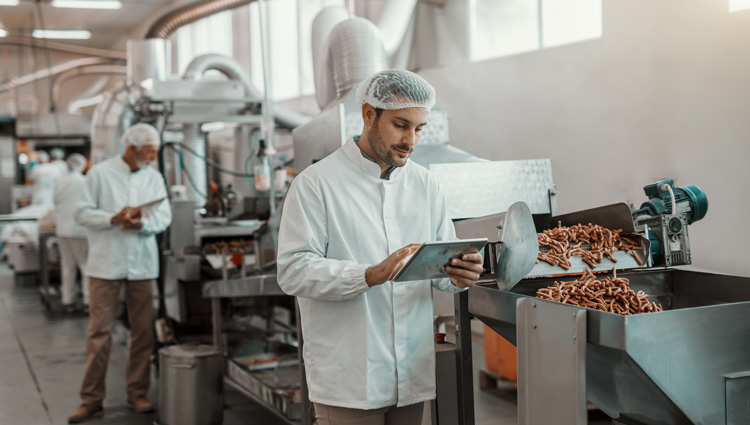Handheld DNA sequencers could become a useful tool for manufacturers
- Like
- Digg
- Del
- Tumblr
- VKontakte
- Buffer
- Love This
- Odnoklassniki
- Meneame
- Blogger
- Amazon
- Yahoo Mail
- Gmail
- AOL
- Newsvine
- HackerNews
- Evernote
- MySpace
- Mail.ru
- Viadeo
- Line
- Comments
- Yummly
- SMS
- Viber
- Telegram
- Subscribe
- Skype
- Facebook Messenger
- Kakao
- LiveJournal
- Yammer
- Edgar
- Fintel
- Mix
- Instapaper
- Copy Link
Posted: 16 March 2021 | Joshua Minchin (New Food) | No comments yet
Handheld devices could enable food manufacturers to perform routine surveillance quickly and has advantages over traditional lab-based methods – though there are hurdles to overcome.


Handheld devices are well suited to environmental monitoring during food production, and have key advantages in ease of use and in identifying a broad variety of bacteria, according to a new study published in the journal npj science of food (a Nature partner journal).
The study, by researchers from the Teagasc Food Research Programme and APC Microbiome Ireland SFI Research Centre, is reportedly the first to test handheld DNA sequencers as a routine microbial monitoring solution for food production facilities.
Microbes cause food spoilage and disease, so routine checks on the microbial life in food production facilities is clearly important. However, the research team says current methods and techniques, though tried and tested, have their limitations.
“Microbiology testing in the food chain has, and continues to, rely on older, classical microbiology testing such as the use of agar and petri dishes,” explained the study’s senior author, Professor Paul Cotter. “This is a time-consuming approach and only microorganisms that are being specifically tested for are identified.”
DNA sequencing offers an alternative. Instead of culturing bacterial samples in petri dishes, it can rapidly analyse bacterial DNA and identify the species in a sample.
However, conventional DNA sequencing can involve expensive lab-based equipment and only highly trained lab technicians can perform the procedure and analyse the results.
This makes it potentially unsuitable for food production facilities which need to quickly and regularly test their products. A newer technology offers rapid DNA sequencing with an easy-to-use handheld device, but no-one had tested its potential in food production – until now. Professor Cotter and colleagues, led by Dr Aoife McHugh, investigated how portable sequencing technology would compare with lab-based sequencing, using swab samples from a working dairy facility.
The handheld device proved to be similar to the larger lab-based sequencing system in terms of the number of bacterial species it could identify in the samples, which the research team believes could make it suitable for use by busy food manufacturers. However, the small device requires a minimum amount of DNA before it can function correctly.
In the well-cleaned dairy facility, researchers said there simply were not enough bacteria in many of the samples, so the researchers had to perform an extra step to amplify the bacterial DNA before there was enough to analyse.
“As microbiologists, the use of DNA sequencing has revolutionised our understanding of fascinating microbial communities at the bottom of oceans, the tops of icebergs and a huge range of other environments,” said Professor Cotter.
“While such studies have the potential to impact on our lives in the longer term, the use of these technologies to enhance food quality and safety can have a very rapid impact on everyday life. This study represents a key step towards a day when non-experts can use DNA sequencing tools to carry out microbiology testing in the food chain.”
Related topics
Equipment, Food Safety, Ingredients, Lab techniques, Outbreaks & product recalls, Product Development, Research & development, Technology & Innovation
Related organisations
APC Microbiome Ireland SFI Research Center (APC), Teagasc Food Research Programme, University College Cork






